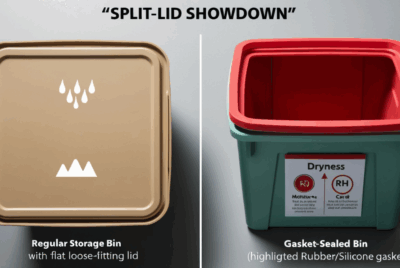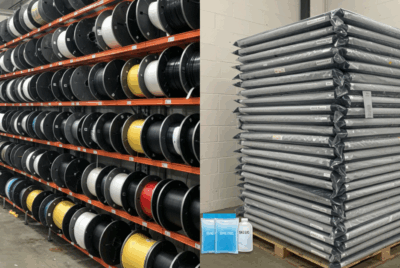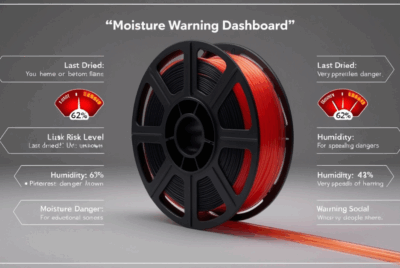What are the benefits of using Nylon?
Nylon is a popular 3D printing filament known for its excellent mechanical properties and versatility. Here are some of the key benefits of using Nylon filament for 3D printing:
1. High Strength and Durability
- Benefit: Nylon is known for its excellent tensile strength and toughness, making it highly resistant to wear, impact, and abrasion. It is ideal for creating functional parts, such as gears, hinges, and mechanical components, that need to withstand heavy use.
- Why it’s Important: This durability makes Nylon a go-to material for prototypes or end-use parts that require long-term performance.
2. Flexibility and Impact Resistance
- Benefit: Nylon has a high level of flexibility, which allows it to bend without breaking. It’s also highly impact-resistant, which means it can absorb shock and handle dynamic forces better than more brittle materials like PLA or ABS.
- Why it’s Important: This makes Nylon an excellent choice for parts that need to absorb impacts, such as automotive components, tools, and protective covers.
3. Excellent Chemical Resistance
- Benefit: Nylon is resistant to many chemicals, oils, and solvents, including fuels, lubricants, and alkalis. This makes it a good choice for applications that may involve exposure to harsh chemicals or environments.
- Why it’s Important: It’s often used in industries like automotive, aerospace, and manufacturing, where parts need to withstand exposure to various chemicals without degrading.
4. High Temperature Resistance
- Benefit: Nylon can handle higher temperatures compared to materials like PLA or ABS. It has a higher glass transition temperature (around 70°C to 80°C), which makes it suitable for parts exposed to heat or that need to maintain their strength under high temperatures.
- Why it’s Important: This makes Nylon a great option for automotive parts, electrical housings, or other products that might be exposed to higher temperatures.
5. Low Friction Properties
- Benefit: Nylon has naturally low friction properties, which makes it an excellent material for producing moving parts like gears, bearings, and bushings. It can reduce wear and tear on mechanical parts and improve efficiency in machines.
- Why it’s Important: This reduces the need for lubrication, increasing the longevity and performance of parts made from Nylon.
6. Good Surface Finish
- Benefit: Nylon prints typically have a smooth, clean finish with good layer bonding. This helps parts look professional and function well without requiring post-processing or sanding.
- Why it’s Important: For parts that need to be both functional and aesthetically pleasing, Nylon offers a great balance of performance and finish quality.
7. High Impact and Abrasion Resistance
- Benefit: Nylon’s resistance to abrasion makes it ideal for creating wear-resistant parts, such as gears, conveyor belts, and bushings. It can handle rough environments, including those with constant friction or exposure to abrasive elements.
- Why it’s Important: This feature is particularly useful for manufacturing parts that need to endure harsh conditions without deteriorating quickly.
8. Moisture Absorption for Improved Strength
- Benefit: Nylon naturally absorbs a small amount of moisture, which can improve its mechanical properties and increase its flexibility. While this needs to be carefully managed (drying the filament before use), it can result in stronger and more durable prints.
- Why it’s Important: Moisture absorption is beneficial for the strength and toughness of parts, though it’s important to keep the filament stored properly to avoid moisture-related issues.
9. Versatility
- Benefit: Nylon is available in various grades and blends, offering versatility in terms of specific properties. For instance, you can find carbon fiber-reinforced Nylon, which offers enhanced strength and stiffness.
- Why it’s Important: The versatility of Nylon makes it suitable for a wide range of applications, from industrial and engineering parts to consumer products.
10. Lightweight
- Benefit: Nylon is relatively lightweight, which is a desirable trait for creating parts that need to be both strong and light.
- Why it’s Important: This property is especially useful in industries like aerospace and automotive, where weight reduction is critical for performance.
Conclusion
Nylon’s combination of strength, flexibility, impact resistance, chemical resistance, and temperature tolerance makes it a highly versatile material for 3D printing. Its ability to perform well in demanding environments—such as mechanical, automotive, and industrial applications—makes it a top choice for creating durable and functional parts. Despite the need to manage moisture absorption, the benefits of Nylon make it an ideal material for high-performance applications.




